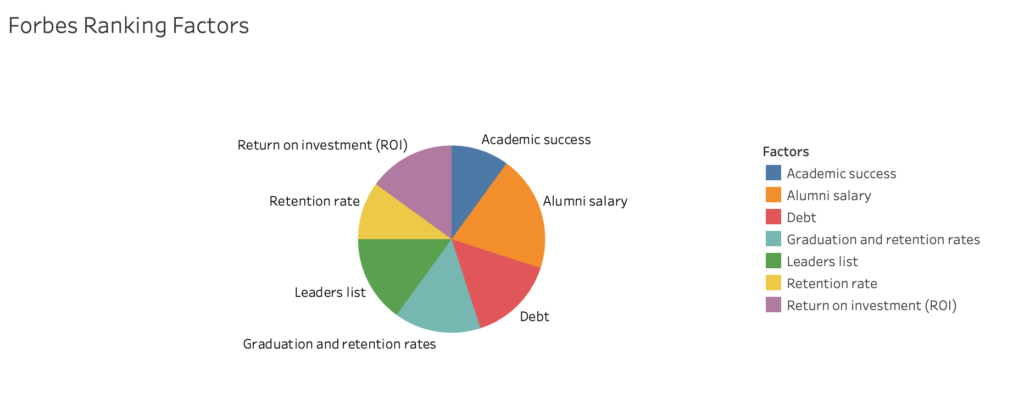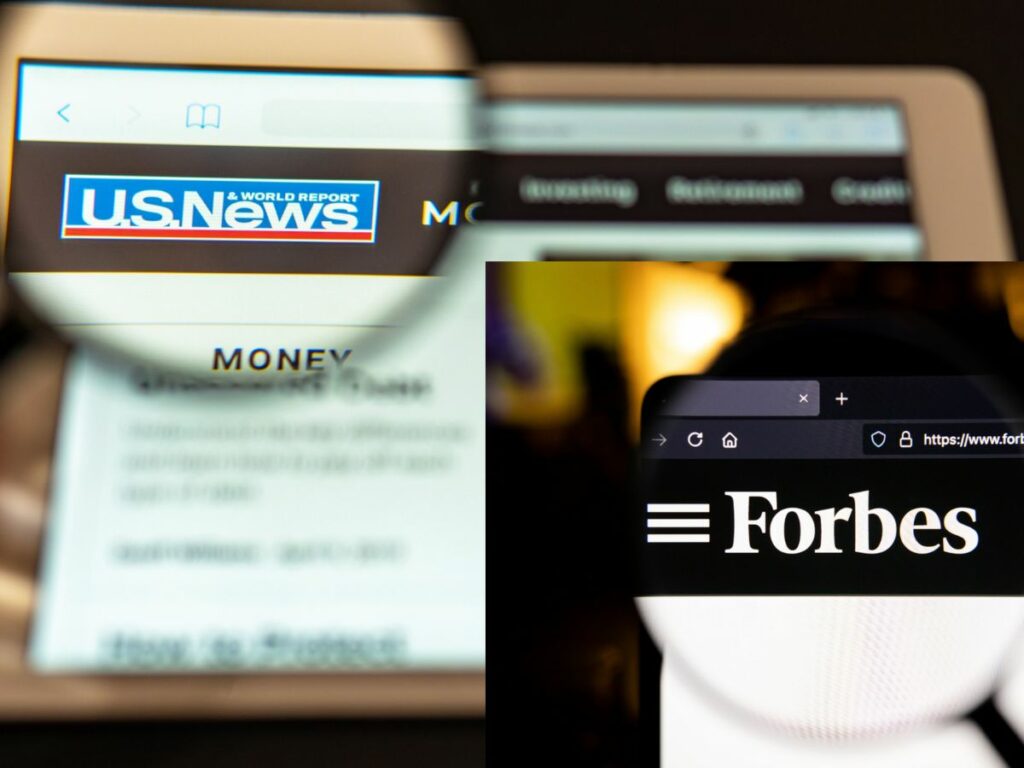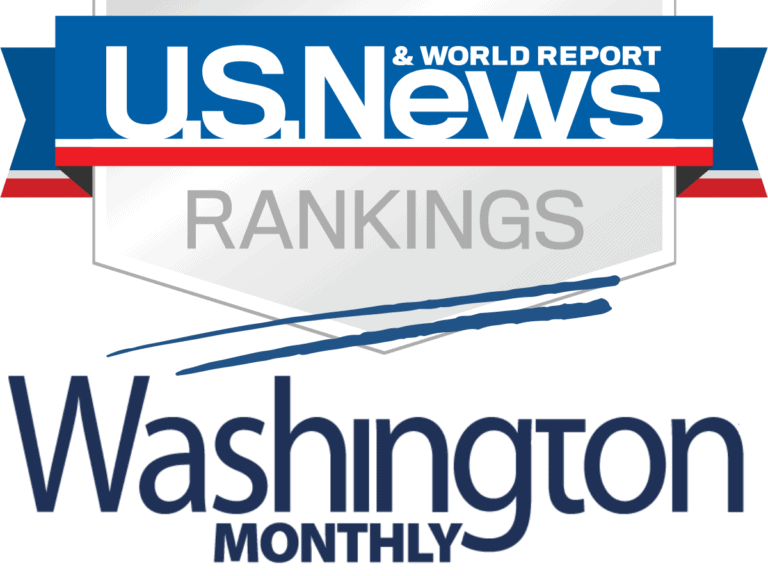How Forbes’ College Rankings Measure up to the Competition
Forbes comes up with various lists every year.
They rank everything from the most powerful people on the planet to America’s largest public companies.
It also comes up with college rankings, albeit comparatively limited compared to other college ranking sites that are just as popular, such as US News, Niche, College Factual, and The Princeton Review.
Many critics and college admissions experts alike agree that Forbes’ college rankings, such as America’s Top Colleges, are too driven by money-related matters such as alumni salary and student debt.

As such, some students may find it unable to provide enough valuable insight.
Ultimately, it all boils down to one’s priorities.
For college-bound teens who consider success synonymous with high starting and mid-career salaries, college rankings by Forbes may help them determine the best-fit schools for their career goals.
Limited Ranking Lists (And Some Non-Updated, Too)
Forbes published four college ranking lists annually:
- America’s Best-Value Colleges
- America’s Top Colleges
- The Top 25 Two-Year Trade Schools
- Top US Schools For International Students
Indeed, one of the things that separates Forbes from most other college ranking sites is it doesn’t come up with dozens of lists, from the top national universities to the colleges with the greatest food.
Of course, we all know it’s a different thing when it comes to ranking successful people and businesses.
Forbes has lots of those!
It’s worth noting that Forbes also comes up with rankings based on its primary rankings.
For instance, the Top 25 Public Colleges is a list of government-funded institutions with some of the highest rankings in Forbes America’s Top Colleges, consisting of both public and private schools.
There’s no methodology exclusive for Forbes’ Top 25 Public Colleges.
Whichever public degree-granting institutions rank the highest in America’s Top Colleges end up in the Top 25 Public Colleges until no more of the 25 available slots remain.
Forbes also has lists such as:
- Top Colleges in the Midwest
- Top Colleges in the Northeast
- Top Colleges in the South
- Top Colleges in the West
- Top Liberal Arts Colleges
- Top Research Universities
However, some are from other lists to create a new list based on a particular category, while others are not updated every year, unlike most other college rankers that do the job like clockwork.

Methodology: Money is a Huge Determining Force
Forbes’ methodology for America’s Top Colleges is straightforward.
You might even reckon it’s the plainest college ranking methodology out there.
It has only seven criteria, with weights ranging from as high as 20% to as low as 10% — most have no sub-metrics, unlike other methodologies with numerous ones, thus complicating college selection.
Forbes does not say how many colleges and universities it examines each time.
However, it reveals that it starts the list by considering schools that educate undergraduates based on their Carnegie classification. It then adds other institutions, such as baccalaureate colleges and those with specialized programs.
The result?
A long list ranking 500 degree-granting institutions in the United States.
Forbes excludes a college from its ranking if it meets any of the following:
- It has announced any plans to close
- It has fewer than 300 undergraduates
- It is one of the five military academies
Alumni Salary: 20%
Among the seven quantifiers Forbes uses, alumni salary has the most weight.
The rule is pretty simple: The more impressive alum salaries are, the higher the ranking of their alma mater.
For this, Forbes turns to Payscale and College Scorecard.
It admits that neither of the two sources is perfect — the former counts on self-reported survey data, while the latter collects data only from those with federal student loans.
Forbes adds that it obtains different information from the two:
- Payscale: Median earnings 6 and 10 years after graduation
- College Scorecard: Median earnings 6 and 10 years after initial enrollment
Debt: 15%
Forbes considers the average debt load for students in ranking a college.
Like when determining the annual salary of graduates, it also relies on College Scorecard.
The criterion debt involves two crucial variables.
First, the debt and percent borrowed index. It’s equivalent to the median federal loan debt per borrower multiplied by the percentage of students who take out federal student loans.
Second, the five-year repayment rate. It’s the percentage of alumni members who paid $1 at least toward their federal loan principal within five years of the start of the repayment period.
Graduation Rate: 15%
As a ranking factor, college rankers have varying opinions on graduation rates.
Some opt for a four-year graduation rate.
Others, like Forbes, prefer a six-year graduation rate.
Forbes has a good reason for considering a six-year graduation rate performance: to include outcomes for transfer students, part-time students, and students who take time off for various reasons, from health concerns to financial issues.
However, the graduation rate criterion is not all about a college’s six-year graduation rate.
Accounting for 5% is the graduation rate for Pell Grant recipients — Forbes gives an institution bonus points for admitting and graduating a larger proportion of students from low-income backgrounds.

Forbes American Leaders List: 15%
Forbes counts on various sources of data.
One of those is its very own list: the Forbes American Leaders List.
To determine how good a postsecondary institution is in producing leaders and entrepreneurs, it counts how many of its graduates make it to Forbes’ most recent lists.
The said lists are:
- Forbes 30 Under 30
- Forbes 400
- Richest Self-Made Women
- Most Powerful Women
Forbes also checks for graduates who are members of the Presidential cabinet, Supreme Court, and Congress.
It also looks for alums with prestigious recognitions, such as:
- Presidential Medal
- Pulitzer Prize
- Nobel Prize
- Lasker Prize
- Academy Awards
- Oscars
Return On Investment: 15%
In determining the return on student and parent investment at a particular institution of higher education, Forbes turns to another collaborator: the national think tank Third Way.
The organization provides Forbes with the price-to-earnings premium for a school.
Simply put, it’s the quotient of the total net price of a college degree divided by the post-enrollment earnings boost students get compared to the usual earnings of a high school graduate in the same state.
Besides a college, Forbes also considers the price-to-earnings premium for students from low-income families.
Retention Rate: 10%
Satisfied first-year students return to the same college the following year.
To have an idea of student satisfaction, Forbes uses data from the Integrated Postsecondary Education Data System (IPEDS), which consists of interrelated surveys the National Center for Education Statistics (NCES) conducts yearly.
Some college rankers that include retention rates in their methodology use data from a single academic year.
Forbes has a different approach: it takes a three-year average retention rate.
Academic Success: 10%
There are a couple of metrics Forbes uses in assessing a college’s academic success:
- The total number of recent graduates who won prestigious scholarship awards
- The average number of graduates who earned graduate degrees in the last three years
For the second metric, Forbes relies on the National Center for Science and Engineering Statistics (NCSES), the principal federal statistical agency providing data on the status of STEM in the US and other countries.
Criticisms and Shortcomings
What’s so great about Forbes is it uses a no-frills ranking methodology.
As such, without things such as publications, citations, and peer assessment, it helps make the college selection process less stressful than it already is for high school teenagers.
However, many find this sheer simplicity of its methodology to be also its weakness.
With alumni salary being the metric with the most weight, it’s apparent that Forbes is too engrossed with associating the amount of money one earns with success.
Clearly, it may not be the best for those who equate success with happiness and health.
In addition, Forbes put colleges of all kinds into a single list.
There’s a complete disregard for factors such as institution type, programs offered, enrollment size, and campus life — if it confers degrees, then it’s under consideration.
Read More: US News vs. Forbes: Which College Rankings are More Accurate?
Disclaimer: The views and opinions expressed in this article are those of the authors and do not necessarily represent those of the College Reality Check.





